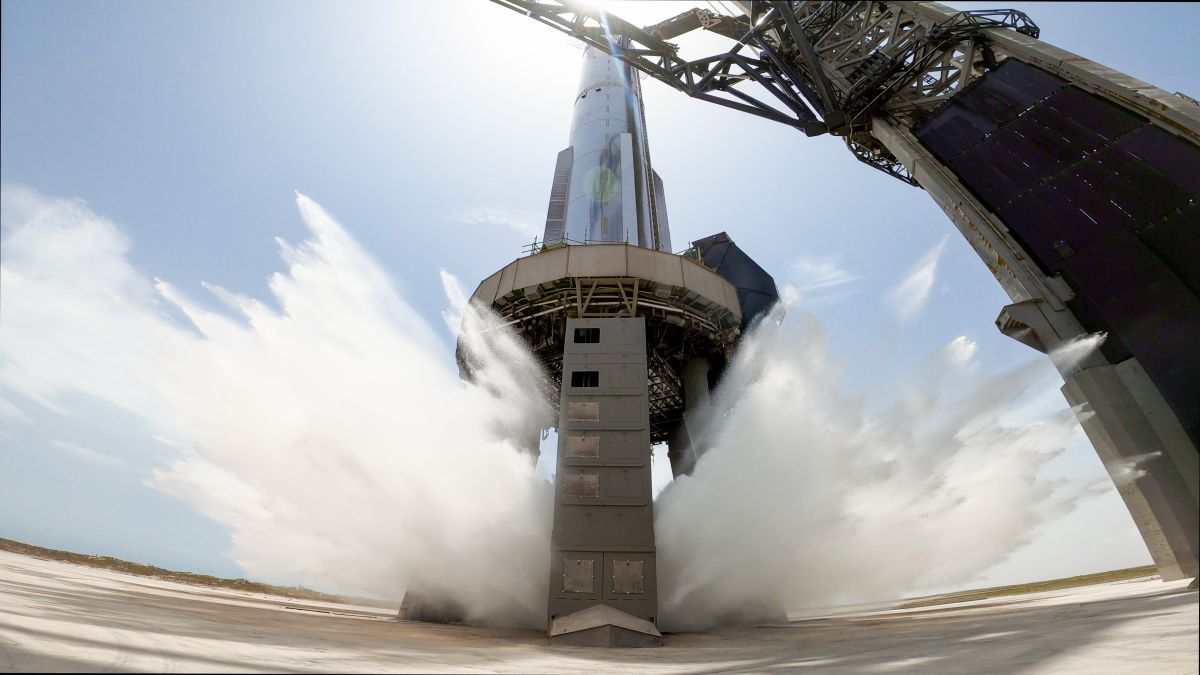Now that’s a lot of water.
On Friday (July 28), SpaceX conducted the first full-up test of the new deluge system at its Starbase site in South Texas, spraying immense fountains of water up toward and around the facility’s orbital launch mount.
The company and its founder and CEO, Elon Musk, posted several videos of the test via social media Friday, showing the system in action from multiple angles.
“New water deluge system to protect against the immense heat & force of Starship launch,” Musk said in one video-sharing post.
Related: Relive SpaceX’s explosive 1st Starship test in incredible launch photos

Starship is SpaceX’s next-generation transportation system, which the company is developing to take people and cargo to the moon, Mars and beyond.
The 394-foot-tall (120 meters) Starship is the biggest and most powerful rocket ever built, and its “immense heat & force” were on full display on April 20. On that day, SpaceX launched a fully stacked Starship for the first time ever, on a test flight that aimed to send its upper stage much of the way around Earth. That didn’t happen, however; the vehicle suffered a few problems during launch, and SpaceX sent a self-destruct command, detonating Starship four minutes into flight.
The April 20 launch also did significant damage to Starbase’s orbital launch mount, blasting out a sizable crater beneath the structure and raining rocks and other debris down on the surrounding area.
The new deluge system, installed beneath the orbital launch mount, is an attempt to minimize such damage going forward. It consists of a reinforced steel plate that spouts huge amounts of water upward; Musk has compared it to an upside-down shower head.
SpaceX is currently gearing up for the second-ever test launch of Starship, but it’s unclear when that liftoff will occur. Even if the vehicle is ready to go soon, regulatory hurdles may still remain; a coalition of environmental and Indigenous groups is currently suing the U.S. Federal Aviation Administration, saying the agency — which grants launch licenses — didn’t properly assess the damage that a Starship launch could cause to the South Texas ecosystem and community.

